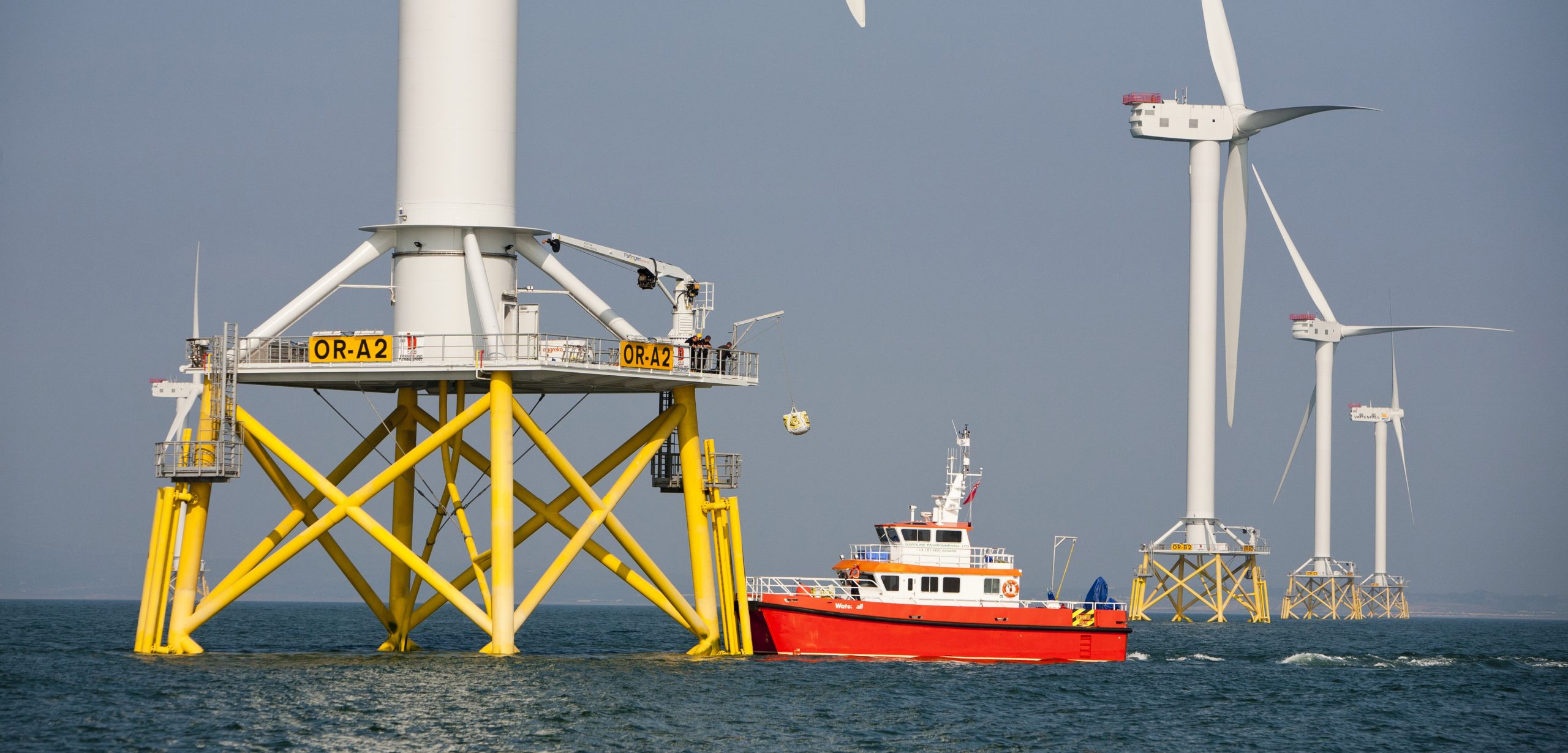Designing Against Disaster
As offshore wind turbines proliferate, engineers are considering the possibility of collisions with ships.
Article body copy
Last August, the offshore support vessel OMS Pollux collided with a wind turbine off the coast of England. None of the 18 crew members were harmed, but the damaged ship leaked fuel oil, creating a slick more than a kilometer long. Luckily, the slick dissipated quickly and the environmental impact was minimal. Yet as the push to develop offshore wind accelerates, some engineers are starting to worry about, and plan for, potential collisions yet to come.
As recently as 20 years ago, offshore wind farms were practically non-existent. Today there are at least 74 wind farms in Europe alone. In just the past five years, the total installed offshore wind capacity has doubled to more than 8,000 megawatts—enough to power approximately 3.2 million homes.
“It’s a pretty booming business,” says Anthony Crockford, a Canadian wind energy consultant. He says that although the capital cost of offshore wind farms can be nearly double those of onshore farms, the expense is partly recouped by higher wind speeds that can produce up to 50 percent more energy. For coastal cities, placing the turbines a few kilometers offshore allows them to be built relatively close to where the power is needed, yet still remain out of sight. This can minimize the aesthetic critiques that often dog plans for onshore wind farms.
Yet the proliferation of offshore wind farms also raises the likelihood of collisions with passenger ships, oil tankers, or other large vessels. In response, some engineers are designing “crashworthiness devices”— add-ons or tweaks to turbine designs that could take at least some of the sting out of a collision.
A team of Chinese researchers, for instance, recently proposed wrapping turbine towers in protective jackets made of rubber and steel. The idea is that in the event of a collision, the jacket would deform, absorbing the shock and leaving both ship and turbine relatively unscathed. Other potential designs include rubber fenders, pads made of aluminum foam, and inflatable tube-like structures.
Ten years ago, a team of researchers attempted to calculate the likelihood of a ship-turbine collision in the Wadden Sea, a wedge-shaped body of water bordering Denmark, Germany, and the Netherlands. As this interactive map shows, the area is crisscrossed by both shipping lanes and rows of wind turbines.
According to their calculations, a major collision could be expected to happen roughly once per decade. If a fleet of tugboats is made available to rescue out-of-control ships, it would reduce that probability to around once a century. But even the researchers admit that any calculated odds will always be based on assumptions. “Accidents may happen in many ways, and modeling them would also need the inclusion of human behaviour,” says Ulrich Callies, a member of the team, in an email. “The latter is hardly possible.”
Even with the wind industry’s explosive growth, collisions between ships and offshore wind turbines are not likely to become common. Already there are measures in place to prevent collisions, says consultant Crockford. Wind farms are typically built at least 3.7 kilometers away from shipping lanes, they’re well marked with electric lights, and they are laid out in a regular pattern. “If you see a line of turbines, you should be able to predict where the others will be,” says Crockford.
However unlikely a collision may be, if the ship is an oil tanker, even a single mishap could have long-lasting consequences. The effects of the 1989 Exxon Valdez oil spill in Alaska, for example, are still being felt today. This is the type of concern that is driving the development of crashworthiness devices.
Yet according to Louis Coulomb, a Dutch structural engineer who specializes in wind turbine development, building turbines to stand up to an errant boat may be the wrong approach to take. He says that a rubber-and-steel jacket, like that pitched by the Chinese researchers, would likely weigh up to 130 tonnes and be very expensive. “It will probably cost you enough in steel [for the jacket] to cover a third of the cost of a new foundation and turbine, should it get hit,” said Coulomb by email.
As counterintuitive as it might seem, a fragile turbine may actually be better than a strong one. An analysis by German researchers shows that turbines supported by a single tower—the most common design for wind farms built in shallow water—would likely just fall over in a collision, causing little damage to the ship. In deeper water where waves are higher, however, some turbines are supported by underwater tripods. If a ship were to hit one of the diagonal struts of the tripod at just the right angle, it could tear a sizeable hole, even if the vessel is reinforced with a double hull.
Any attempt to redesign wind turbines will bring its own balance of benefits and drawbacks. As Callies suggests, there’s no way to anticipate every possible situation—the key will be to decide what level of risk we’re willing to take. The best that engineers can do is create safeguards and hope that, if needed, they are enough. In that sense, we’re all in the same boat.

